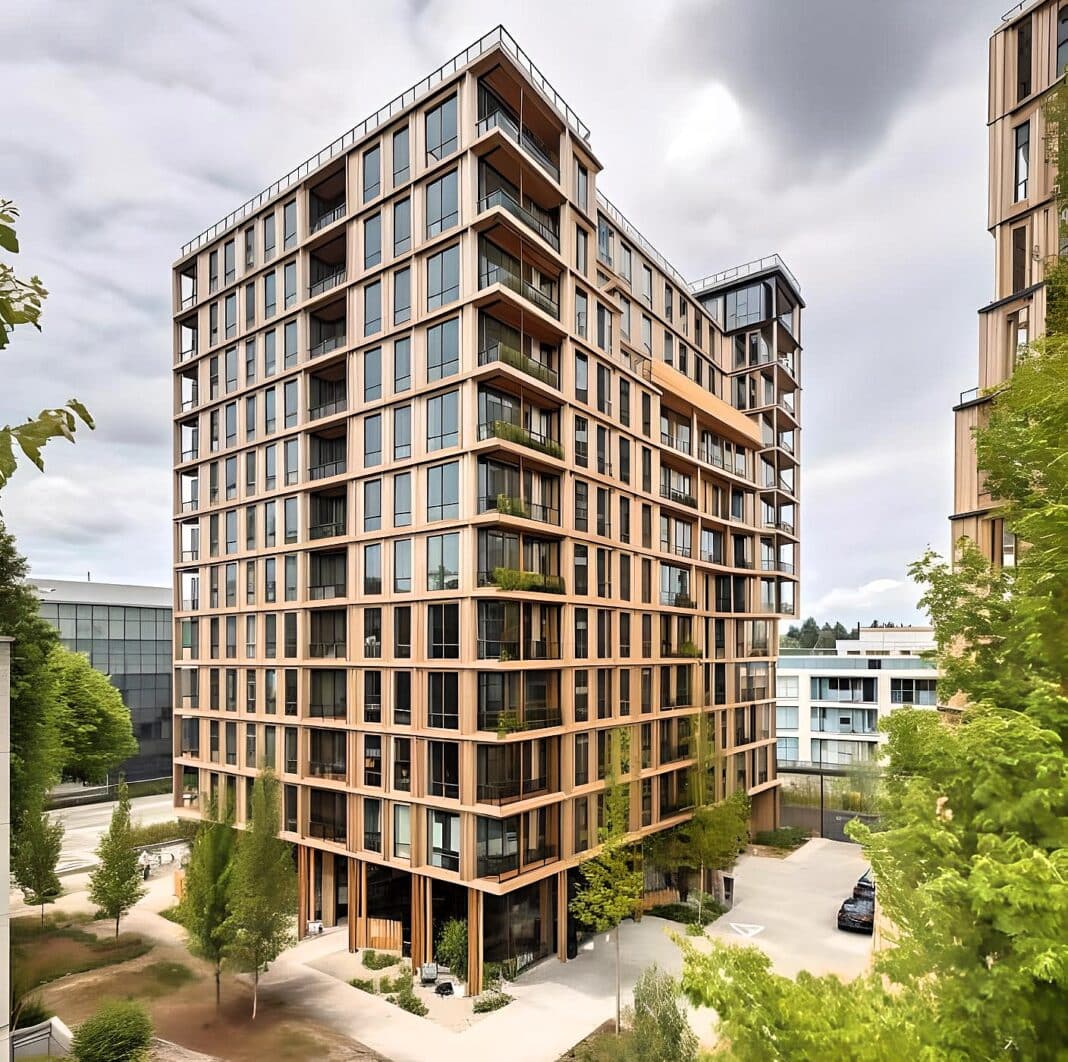Last year, Wood Central reported that 28% of forestry and forest-related industries would be impacted by artificial intelligence (AI).
Now, US-based Construction Specifier reports that the architecture and design community is adapting to meet AI’s challenges.
Speaking to Ankrom Moisan, a US-based architecture practice leading the push to mass-timber construction at scale, the practice uses “Midjourney” software to expedite the conceptual design phase.
The software presents project-specific design precedents that align well with client requirements, visions, and aesthetic preferences.
Using data from Goldman Sachs Global Investment Research, Morgan Stanley Capital International has ranked industries by their estimated share of employment exposed to AI-driven automation.
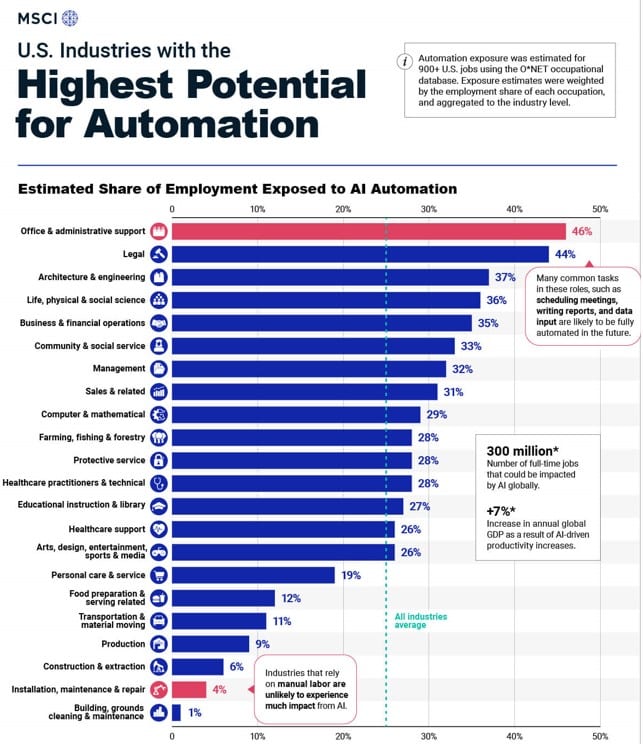
It found that “architecture and engineering” were among the top 3 industries impacted by AI and automation – with 37% of roles disrupted by new technology.
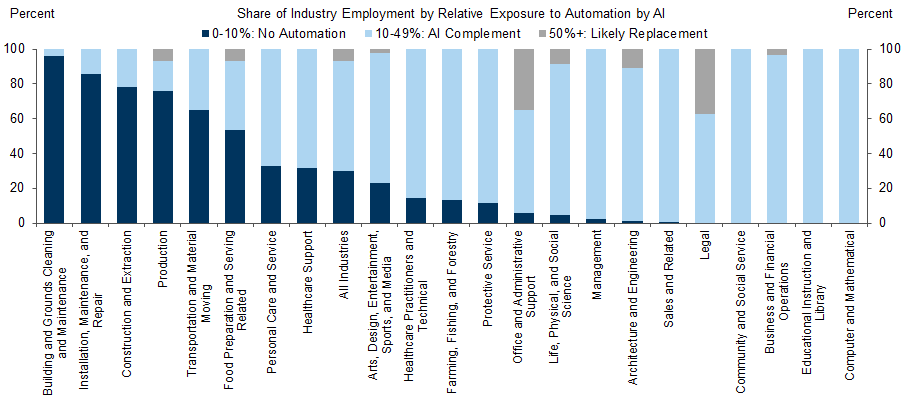
Midjourney is a software company that provides design tools for creating 3D models and 2D drawings. Architects, engineers, and designers use it to create detailed models of buildings, bridges, and other structures.
It is known for its ease of use and powerful features that allow users to create complex designs quickly and easily.
Ankrom Moisan recently used AI software to develop imagery for a mixed-use mass timber building it is currently designing.
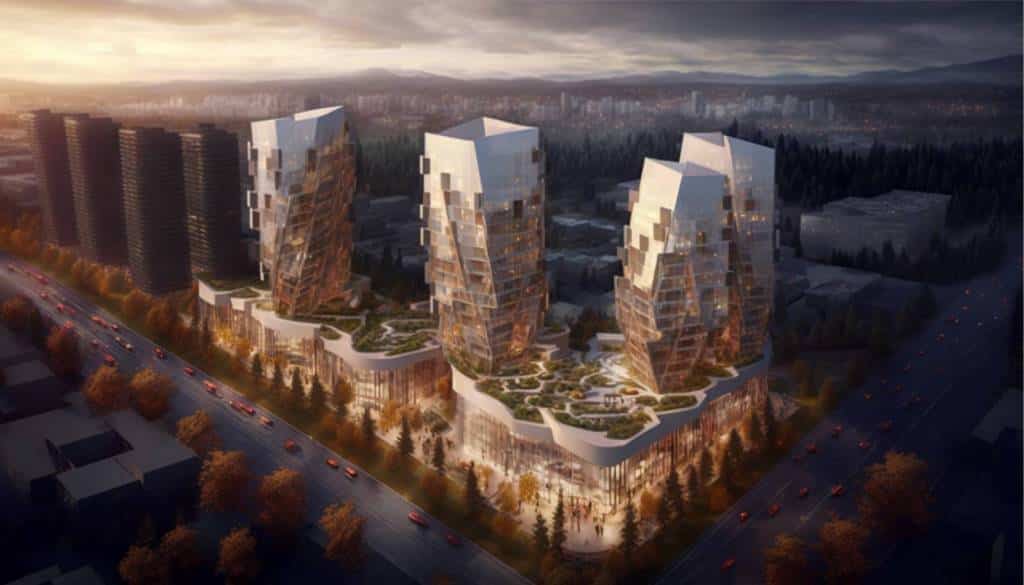
For Ramin Revani, a senior associate at Ankrom Moisan, the AI software has dramatically increased efficiency with designs altered near-real times using different prompts.
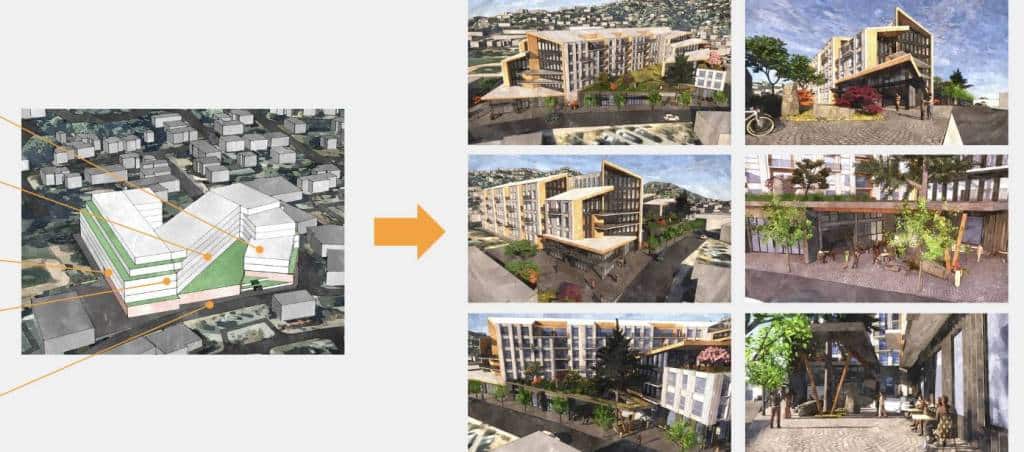
On Friday, the Wood Central publisher spoke to one of Australia’s peak design associations, identifying AI and automation as significant drivers of change in the architecture and design community.
“We are seeing the emergence of AI programmes which greatly alter design possibilities, but also expectations from clients,” said the unnamed representative.
In March, James Tremble – Interior Designer, TV Personality and Planet Ark ambassador, spoke about the opportunities and pitfalls around AI and automation at the Wood You Like To Know event in Brisbane.
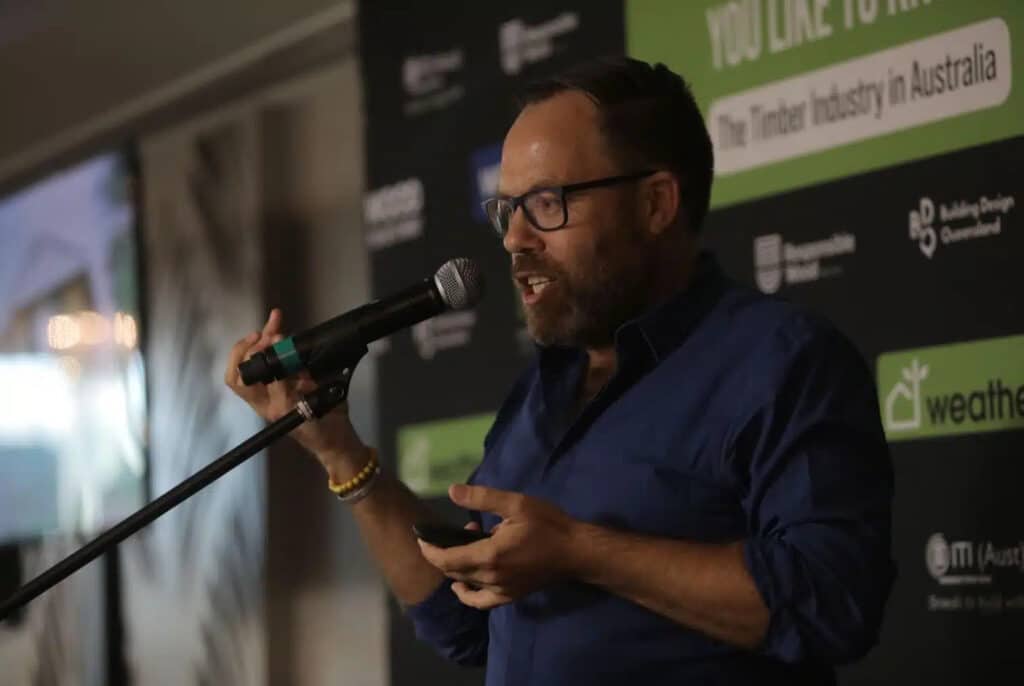
“What we’ve initially tried is to take the project guiding design principles established as a basis for the design concepts and feed a collection of descriptive words into Midjourney AI to see what kind of visual representation it will create with those thoughts,” Michael Great, the design director at Ankrom Moisan.
“So again, trying to accelerate the process and get to some visuals representing the design vocabulary we’ve already discussed to align in a design direction.”
As technology evolves, Mr Great said, there will be other ways where architects can utilise AI and automation.
“In final renderings, for instance, but coming up with precedent imagery is the best use case.”
Mr Great feels that relying on language to get relevant outputs will “only gain momentum” going into the future.
“I believe that’s the direction architecture has always moved towards,” he says.
“For example, 100 years ago, it took a large team to hand-draw a construction set for an urban tower, whereas, in the future, high-rise towers could be designed and drawn by a small team utilising AI and other tools.”
“In my opinion, designers currently spend insufficient time understanding the places and people who will occupy the spaces they create…we often rush through important analysis.”
“Incorporating AI can lead to more thoughtful buildings, allowing us to dedicate more time to considering the impact of our designs on the community, occupants, and the environment, rather than solely focusing on modelling or drawing,” he says.
“This prospect is quite exciting, as it ensures continuous improvement in architecture.”
“I am optimistic that nothing gets worse; it only gets better through this process.”
Mr Rezvani also presented his take on the future of technology in architecture:
Without a doubt, he says, “AI will resolve inefficiencies in the architectural process.”
“It will amplify an individual’s productivity, leading to fewer people required to accomplish the same amount of work.”
“AI enables us to quickly study numerous aspects of a project, ultimately enhancing the quality by understanding the site’s parameters more comprehensively.”
Last year, Wood Central reported that CLT Toolbox – a new software package that makes timber design easier for architects and engineers – is expanding its reach from its Australian base into Indonesia and Ethiopia.
Founded by CEO Adam Jones, a former Future Green Leader of the Year award recipient from the Green Building Council of Australia (GBCA), CLT Toolbox is focused on making timber design simpler than concrete and steel, ultimately aiming to eliminate embodied carbon emissions in construction.
Mr Jones also hosts the WoodSolutions podcast ‘Timber Talks’ and co-hosts the ‘What You Will Learn’ podcast told Wood Central that CLT Toolbox is partnering with the mass timber supply chain and the university sector to provide fourth-year engineering students with pathways to join the industry.
So, what does the future have in store for the future of design?
It feels like an amplification, Mr Revani said, but the future is uncertain.
“In six months, we may witness further advancements.”




